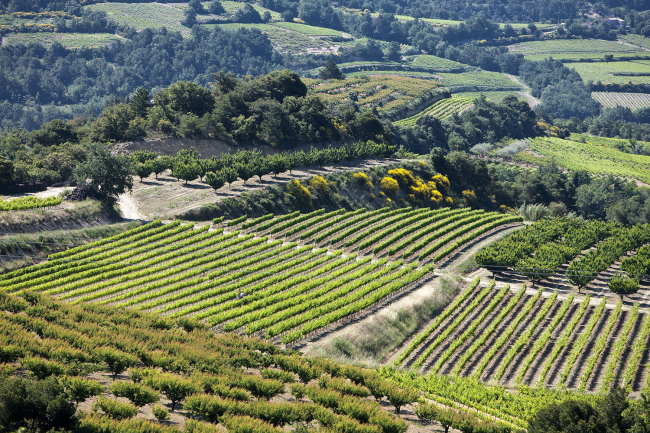This article is older and has been archived.
It remains accessible, but the information provided may be out of date or incorrect.

Energy efficiency on farms is one of the commitments of the Grenelle Environment Round Table, along with the production and use of renewable energies.
To this end, farmers have developed the installation of photovoltaic panels, mainly on the roofs of their farm buildings[1]. On the other hand, in order to avoid further increasing the artificialization of the UAA, ground-mounted photovoltaic parks are not intended to be installed in agricultural zones, as indicated in the circular on the development and control of ground-mounted photovoltaic power plants of December 18, 2009, even though their installation in agricultural or natural zones remains possible as long as they are not incompatible with the exercise of an agricultural activity and do not affect the safeguarding of landscapes.
Because of their constraints and cost, rooftop or brownfield installations are unable to meet the photovoltaic energy production targets set by France in line with its international commitments. This has led to the development of a new concept: agrivoltaics, which aims to combine energy production with agricultural production, and to provide the latter with various services, ranging from additional income to improved production.
The INAO was duty bound to study this new approach. Indeed, its 2019-2023 Contract of Objectives and Performance sets as its first strategic direction to foster an integrated approach to SIQOs, open to innovation and as an objective, among other things, to develop methods for appropriating innovations that contribute to the development of SIQOs without altering their promises. With this in mind, on February 20, 2020, the Permanent Council set up a working group to study the compatibility of ground-based photovoltaic electricity production with agricultural production under SIQO.
The group's leaders, who are also in charge of the Scientific and Technical Commission, approached ADEME to find out more about the technical and regulatory environment for photovoltaic production, the challenges of developing renewable energies, and met with designers of various agrivoltaic solutions. On the basis of this information, the working group believes that it is unthinkable to leave the SIQO out of this innovation, which can contribute to their development, but that a framework is nevertheless necessary due to certain potentially harmful aspects (damage to the landscape, market disorganization, production difficulties, loss of productive land, non-compliance with certain production conditions in the specifications, etc.). It recommends that ODGs propose experiments to the INAO and stresses the need for ODGs to be informed of projects concerning their members.
These proposals have been validated by the Permanent Council, which has also asked INAO departments to explore the various ways in which these schemes can be supervised. This work is underway.
Parallel to this, each National Committee was given the opportunity to debate the subject. All the Committees welcomed the report, but stressed the threats these schemes could pose to SIQOs, particularly to their image and landscape, but also sometimes to counter-indications with the specifications of certain sectors.
The contributions of the National Committees and the legal expertise of the departments will enable the working group to refine its recommendations and return to the Permanent Council in the coming weeks with a proposed strategy enabling this innovation to contribute to the development of SIQOs without altering their promises
[1] Photovoltaic production by farms represented 13% of total photovoltaic production in 2015. Nearly ¾ of this production in agricultural areas comes from roofs.
Would you like to contribute to the agrivoltaics working group?
You can send your thoughts, reactions, projects... to Emmanuelle Vergnol (e.vergnol@inao.gouv.fr) or Thierry Fabian (t.fabian@inao.gouv.fr) before September 15.
All the latest news on sustainability
A new directive from the Comité national des Indications Géographiques Protégées, Labels Rouges et Spécialités...
News

News
As part of their partnership, INRAE and INAO organized a webinar on SIQO on November 25, 2025, on the theme "Better...
News

News
Meeting under the aegis of INAO, the Comité national des appellations d'origine relatives aux vins, boissons alcoolisées...
News

News
